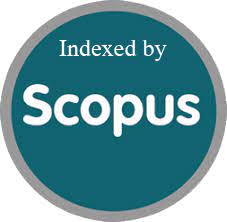Assessing the impact of medication adherence on health outcomes in pediatric patients with chronic diseases
DOI:
https://doi.org/10.52783/jns.v14.1581Keywords:
Chronic diseases, pediatric medication, and medication adherenceAbstract
Children's prescription non-adherence is a challenging problem for the healthcare system. This problem may be influenced by the child's age, lack of knowledge about the illness or its treatment, culture, family dynamics, financial situation, drug use, and preferences. The most effective practices may focus on well-defined mediations for each patient and their family members. Drug specialists are at the forefront of patient care and can help patients take their drugs more consistently by providing guidance and building a trustworthy relationship with the family. This article discusses frequent adherence issues with children’s chronic diseases and offers some methods to improve adherence. Pharmacotherapy is frequently used over an extended period of time to treat chronic disorders. Approximately 50% of patients do not take their prescriptions as recommended, so even while these drugs are effective at fighting disease, their full advantages are sometimes not realized. Poor drug adherence can be caused by a wide range of factors, including those pertaining to individuals, doctors, and health care systems. The complexity and diversity of drug adherence hurdles necessitate multifaceted approaches to adherence improvement.
Downloads
Metrics
References
Lam WY, Fresco P. Medication adherence measures: an overview. BioMed research international. 2015;2015(1):217047.
Devaki V, Ramganesh DE, Amutha DS. Bibliometric analysis on metacognition and self-regulation using biblioshiny software. Indian Journal of Information Sources and Services. 2024 Jun;14(2):115-25.https://doi.org/10.51983/ijiss-2024.14.2.17
Dawson LA. What factors affect adherence to medicines? Archives of Disease in Childhood-Education and Practice. 2019 Feb 1;104(1):49-52.
Kadhim AA, Mohammed SJ, Al-Gayem Q. DVB-T2 Energy and Spectral Efficiency Trade-off Optimization based on Genetic Algorithm. Journal of Internet Services and Information Security. 2024;14(3):213-5. https://doi.org/10.58346/JISIS.2024.I3.012
Yang C, Hao Z, Yu D, Xu Q, Zhang L. The prevalence rates of medication adherence and factors influencing adherence to antiepileptic drugs in children with epilepsy: A systematic review and meta analysis. Epilepsy Research. 2018 May 1;142:88-99.
Shichkina YA, Kataeva GV, Irishina YA, Stanevich ES. The use of mobile phones to monitor the status of patients with Parkinson's disease. J. Wirel. Mob. Networks Ubiquitous Comput. Dependable Appl.. 2020 Jun;11(2):55-73.
Lahon S, Chimpi K. Fostering sustainable technological development in small and medium-sized enterprises from developing nations within the framework of the digital economy and resource-constrained environments. Global Perspectives in Management. 2024;2(4):15-25.
Shi S, Caluyo F, Hernandez R, Sarmiento J, Rosales CA. Automatic Classification and Identification of Plant Disease Identification by Using a Convolutional Neural Network. Natural and Engineering Sciences. 2024;9(2):184-97.https://doi.org/10.28978/nesciences.1569560
Gray WN, Netz M, McConville A, Fedele D, Wagoner ST, Schaefer MR. Medication adherence in pediatric asthma: a systematic review of the literature. Pediatric Pulmonology. 2018 May;53(5):668-84.
Nazarova J, Bobomuratov T. Evaluating the Clinical Utility of Genetic Testing in Guiding Medication Selection. Clinical Journal for Medicine, Health and Pharmacy. 2023 Oct 9;1(1):64-72.
Fatima H, Jabeen F, Raza T, Raza MH, Zafar S, Chaudhry AS. Copper nanoparticles induced oxidative stress and tissue integrity in gills and brain of Cyprinus carpio. International Journal of Aquatic Research and Environmental Studies. 2024 Oct 10;4(2):53-68.http://doi.org/10.70102/IJARES/V4I2/4
Hemmati M, Mehrabi AM, Karamkhani J, Haidari Z, Poor HRS, Moradi A, Ranjbari M. Studying and comparing the effectiveness of brain stimulation over the skull through transcranial direct current stimulation and matrix to reduce craving of methamphetamine. Int Acad J Soc Sci. 2014;1(2):71-79. https://iaiest.com/iaj/index.php/IAJSS/article/view/IAJSS1410019
Khakimov O, Ortiqov O, Ramazanova N, Okbutaev B, Mukhammadieva O, Abdinazarov U, Khamidov A, Khudoymurodova K. UNVEILING GEOLOGICAL HISTORY THROUGH STRATIGRAPHY AND MINERALOGY. Archives for Technical Sciences. 2024 Dec 24;2(31):305-10. https://doi.org/10.70102/afts.2024.1631.305
Chauke GD, Nakwafila O, Chibi B, Sartorius B, Mashamba-Thompson T. Factors influencing poor medication adherence amongst patients with chronic disease in low-and-middle-income countries: A systematic scoping review. Heliyon. 2022 Jun 1;8(6).
Geist R, Grdisa V, Otley A. Psychosocial issues in the child with chronic conditions. Best Practice & Research Clinical Gastroenterology. 2003 Apr 1;17(2):141-52.
Mendes TP Gameiro Pompeu, Carla Alexandra Mesquita Crespo, Joan Kessner Austin. Family cohesion and adaptation in pediatric chronic conditions: The missing link of the family’s condition management. J Child Fam Stud. 2016;25:2820-2831.
Alzaidi, E. R. Optimization of deep learning models to predict lung cancer using chest X-ray images. International Academic Journal of Science and Engineering. 2024;11(1):351–361. https://doi.org/10.9756/IAJSE/V11I1/IAJSE1140
Baguley D, Lim E, Bevan A, Pallet A, Faust SN. Prescribing for children–taste and palatability affect adherence to antibiotics: a review. Archives of disease in childhood. 2012 Mar 1;97(3):293-7.
Downloads
Published
How to Cite
Issue
Section
License

This work is licensed under a Creative Commons Attribution 4.0 International License.
You are free to:
- Share — copy and redistribute the material in any medium or format
- Adapt — remix, transform, and build upon the material for any purpose, even commercially.
Terms:
- Attribution — You must give appropriate credit, provide a link to the license, and indicate if changes were made. You may do so in any reasonable manner, but not in any way that suggests the licensor endorses you or your use.
- No additional restrictions — You may not apply legal terms or technological measures that legally restrict others from doing anything the license permits.










